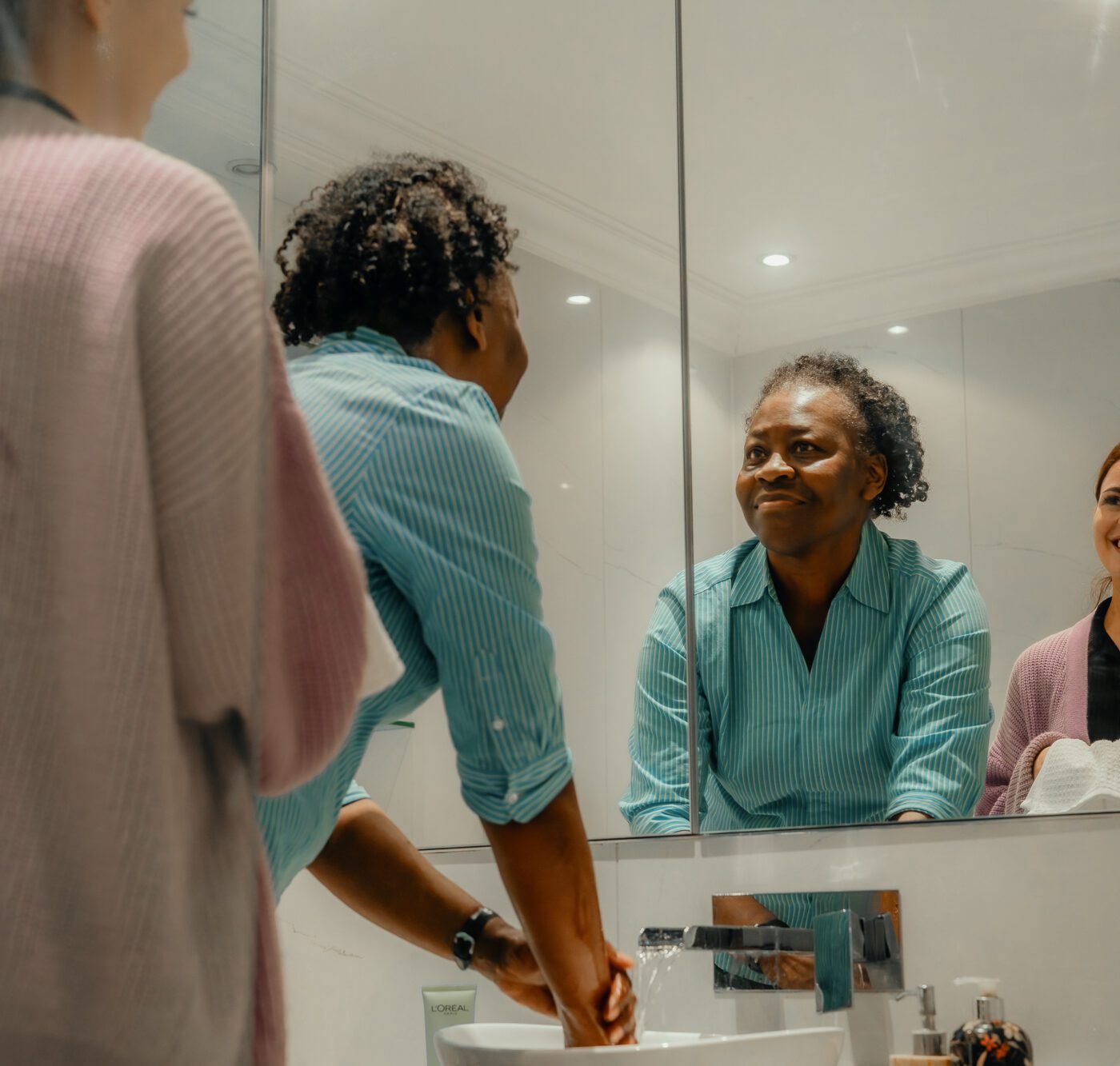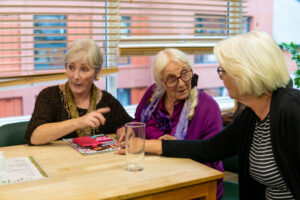How to make bathrooms safe for the elderly
Tags
Elderly Mobility and Independence
Regulate water temperature
Scalding can be a hazard for elderly people, who may have sensory impairments, reduced mobility or be unable to react quickly and appropriately to high water temperatures. Older people also have thinner skin which can leave them less tolerant to high temperatures. Often between 38C and 41C is cited as the maximum temperature for elderly skin, – just a few degrees higher than body temperature. You can set a maximum temperature for all sinks and baths in the home in a few different ways. You can change the settings directly on your boiler or water heater (if you’re unsure how to do this, always seek the support of a professional), or you could ask a plumber to install a thermostatic mixing valve on sinks and taps.
Install grab rails
If you have poor balance, it’s likely you may have problems getting in and out of the bath. A common cause of accidents in the bathroom are caused by attempting to use a towel rail as a support when getting out of the tub, but considering towel rails are not designed for this use, they may collapse.
If you have sufficient upper body strength to use them, installing easily visible grab rails in a key position you to maintain your own personal hygiene in the bathroom. Rails that are bolted to the wall are far safer than any that rely on suction to keep them in position. When installing a rail, ensure it is attached to the wall stud if you don’t have internal brick walls.
Did you know –
That one in two people aged 80+ are likely to have at least one fall per year.
Consider a shower chair
If you enjoy a shower but have balance problems, a shower chair can give you stability and make showering much more manageable. The shower chair you choose should have non slip rubber tips on its legs so that it cannot slide around. You can choose from a simple stool that can also be used in the bath or various designs of chair suitable for people with a range of mobility and health issues.
Install a walk-in bath
If you prefer a relaxing warm bath, but find it difficult to get in and out of it, a walk-in bath could be the answer. These baths have a door that opens and allows the user to walk in and sit down. Climbing over the side of a traditional tub can be difficult, and sitting on the side can also be unsafe. a walk in bath can significantly reduce the risk of falls. Even if a person has 24-hour care, many will probably prefer to bath independently, and a walk-in bath can make this possible.
Guard against slips
Ideally, your loved one’s bathroom will have non-slip flooring, but if it does not, and you do not wish to replace the existing flooring, you can reduce the risk of falls on slippery tiles by having non-slip mats in areas that are likely to get wet. These include in front of the sink, toilet, bath and shower.
You should also ensure that there are non-slip mats on the base of the bath and shower, as falls here can cause serious injuries and are easily preventable with suitable non-slip mats.
Install a raised toilet seat
In elderly care facilities, toilet seats are often raised because so many older people have difficulty in lowering themselves down to sit on a toilet seat at the traditional height. If you or your loved one would find it easier to use a toilet with a seat three or four inches higher, you can easily install one of these for them.
Raised toilet seats are available at different heights, and if you are unsure which you need, a community nurse or occupational therapist may be able to advise you which would best.
Some seats have arms attached which help the person to lower themselves to a seated position, but it is also advisable to install a grab rail close to the toilet for additional support.
Did you know –
According to Bathing Solutions, nearly one in ten people say they, or an elderly relative, have stopped washing daily due to fears around falling or injuring themselves.
Rethink storage
Moving essential items to within easy reach removes the need to bend down or stretch to reach items such as soap or shampoo when washing. You could mount a shower caddy on the wall to hold all the toiletries and accessories at an appropriate height.
Alternatively, dispensers for products such as soap and shampoo could be mounted on the wall to reduce clutter in the shower. These can easily be refilled when empty.
Change doors and lighting
Lighting and doors can also have an impact on bathroom safety. Inadequate lighting can contribute to falls if visibility is poor, so make sure that the bathroom is well lit. Halls may also need night lights for early morning loo trips.
Keep in mind that it may be possible to rehang the bathroom door so that it opens outwards. This would mean that caregivers would have easier access to the bathroom if your loved one did slip and fall against the door.
Consider a bath lift
If you or your loved one enjoys a bath but is unable to get in and out safely, you could install a bath lift to help with access to the tub without risk of falling. Lifts can also help a carer to assist you in the bath if you’re unable to support your own weight. Various designs are available and they may be mechanical or electric.
There are many steps you can take to improve bathroom safety to enable you to retain their mobility and independence as much as possible. You could also consider installing a phone in the bathroom, so that you can summon help in an emergency, or provide them with a waterproof call system that could also be used in other areas of the home. Most medical alert buttons are waterproof enough to be worn in the shower, or can be placed on the side of a bath. Make sure you always have yours with you.
Read more care guides

How to prepare for a live-in caregiver
Care at home: how to prepare the home for a live-in caregiver A live-in carer can make a massive difference to your loved one’s quality

6 tips for finding the right live-in carer
Finding the right live-in carer is a significant and deeply personal decision, impacting your loved one and the entire family. You’re seeking someone trustworthy, compassionate,

The cost of care – everything you need to know
The true cost of care – everything you need to know Discover the true cost of care and explore your funding options with our care

Understanding autism in older adults
While Autism is usually diagnosed in childhood, an increasing number of older adults are being formally diagnosed in later life. Masking autism symptoms can result

A guide to speaking with a loved one about home care
Why do older adults resist care? A guide to speaking with a loved one about home care Bringing up the topic of care at home

How to choose the right personal alarm for seniors: A comprehensive guide
Personal alarms for elderly Discover how personal alarms work, who they’re best suited to, and how they provide greater peace of mind to older people